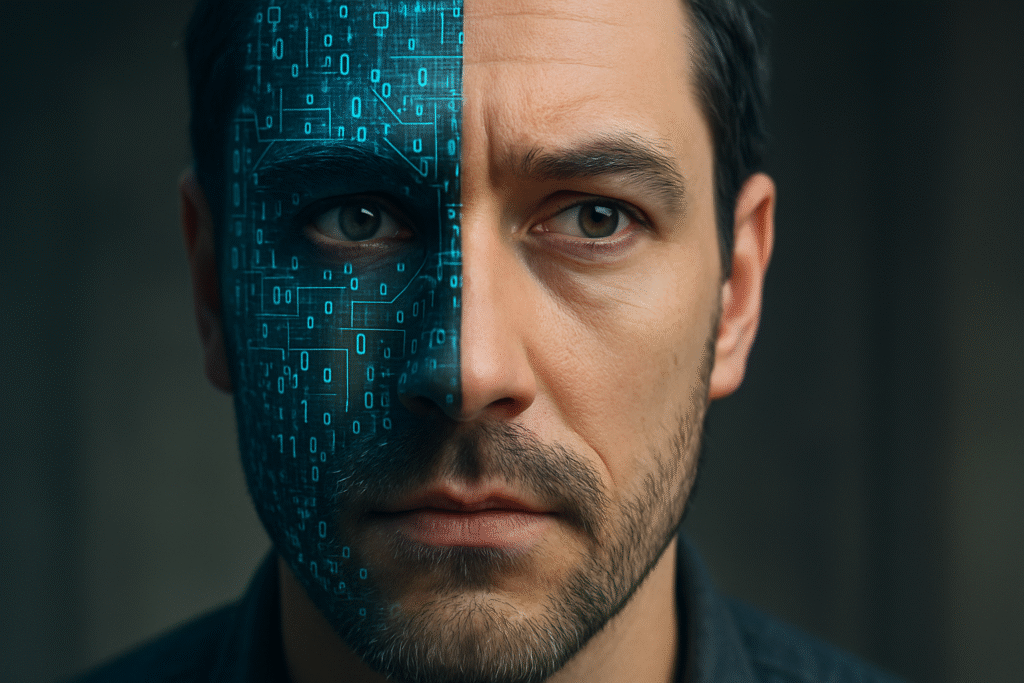
Introduction
Imagine your smartphone reading your emotions just by watching your face. That’s no longer science fiction. It’s reality. A new AI app claims to detect your mood using facial cues. It promises to support mental health. But it also raises serious ethical questions. Is it helpful? Or is it a new form of surveillance?
This article dives deep into this debate. We explore the promises and perils of emotion-reading AI. And why now, more than ever, ethics must come first.
What Is This AI App?
The app in question is called Emobot, developed in France. It uses artificial intelligence to analyse your micro-expressions. That means tiny changes in your face—too small for most humans to notice.
By interpreting these subtle shifts, the app claims it can detect depression, anxiety, stress, and other emotional states. It’s already being prescribed in mental health settings. Doctors use it to track changes in mood across time.
It sounds promising. But what are the implications?
The Benefits of Emotion-Reading AI
Let’s start with the positives.
1. Early Detection of Mental Health Issues
The app provides real-time feedback. That could help detect early signs of depression or emotional distress. It might even prevent crises.
2. Support for Overburdened Health Systems
With rising demand for mental health services, AI could help monitor patients remotely. That could ease pressure on therapists and psychiatrists.
3. Objective Monitoring
People often under-report or forget their emotions during consultations. An AI tool could offer a more consistent, objective record of emotional states.
The Ethical Concerns
Despite the benefits, many experts are raising red flags.
1. Privacy Concerns
To work, the app needs constant access to your face. That means your camera stays on—potentially 24/7. Even if data stays on the device, it feels invasive. You’re being watched, even at your most vulnerable.
2. Informed Consent
Do users really know what they’re agreeing to? Most terms and conditions are long and confusing. True informed consent requires clarity and transparency. That’s not always the case with AI apps.
3. Bias and Inaccuracy
Facial recognition AI has a history of bias. It often performs poorly for women, ethnic minorities, and people with disabilities. Misreading someone’s mood could lead to misdiagnosis or wrong interventions.
4. Surveillance Disguised as Care
What if this technology is used by employers, governments, or advertisers? What starts as healthcare could morph into manipulation. Imagine job interviews where your emotions are scored. Or schools watching students’ attention through webcams. The possibilities are alarming.
Is It Truly Scientific?
Emotion recognition isn’t foolproof. Facial expressions vary across cultures, age groups, and individuals. Someone frowning may not be sad. A smile doesn’t always mean happiness.
AI can’t understand context. It sees a face—but not the full story. Without human judgement, its conclusions could be dangerously misleading.
What Do Experts Say?
Ada Lovelace Institute: Emotion AI needs urgent regulation. Right now, there’s a dangerous legal vacuum.
AI Now Institute: Emotion-recognition tech is “scientifically dubious” and ethically fraught.
Data Ethics Commission (UK): Any use of facial analysis must meet strict tests of necessity, proportionality, and fairness.
Real-World Implications
In some schools, cameras already monitor students for emotion. Some call centers use AI to score workers’ “mood.” In some cases, these tools have led to stress, false accusations, or discrimination.
The AI app might start in therapy. But where will it end?
What Should Be Done?
We need firm boundaries. Emotion AI is too powerful—and too risky—to go unregulated.
1. Tougher Laws
Governments must act now. Ban its use in surveillance. Require transparency in healthcare. Enforce consent standards.
2. Data Rights
Users should have full control. They should know how their data is used. And they should be able to delete it, anytime.
3. Bias Testing
Every AI system must be tested for fairness. It must work equally well across all groups.
4. Human Oversight
AI can assist. But it must never replace therapists. Final judgement must come from humans, not machines.
What You Can Do
- Read privacy policies before installing health apps.
- Demand apps that give you real control over your data.
- Support organizations fighting for digital rights.
- Push for regulation in your country.
- If in doubt—turn the camera off.
Conclusion
AI is changing mental health care. Emotion-reading apps offer real promise. But without strong ethics, they risk doing more harm than good. We must ask the right questions now. Before these tools become the norm.
Our emotions are not just data points. They’re deeply human. AI should help us—without invading our inner world.
Technology must serve people. Not the other way around.
Frequently Asked Questions (FAQs)
Q1: How does an AI app read emotions from facial cues?
It uses computer vision to track micro-expressions—tiny muscle movements in the face. These are then interpreted using trained algorithms.
Q2: Is facial emotion AI accurate?
Not always. It struggles with cultural differences, individual variations, and context. It can misinterpret emotions, especially for minority groups.
Q3: Is using such apps legal in the UK?
Yes—but laws are vague. There are no specific regulations yet on emotion-recognition AI in healthcare. That may change soon.
Q4: Can these apps be used without consent?
In health settings, consent is required. But in workplaces or public spaces, the rules are blurry. Always check what you’re agreeing to.
Q5: How can I protect my privacy?
Choose apps that are transparent. Turn off cameras when not needed. Read terms carefully. Support calls for stronger regulation.
